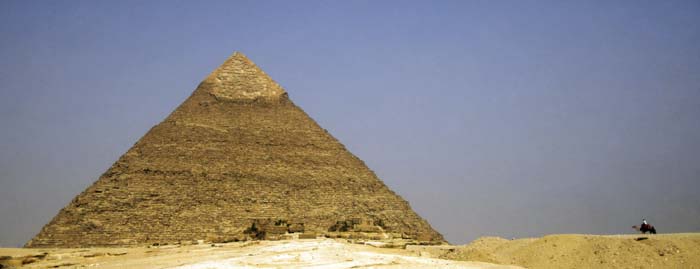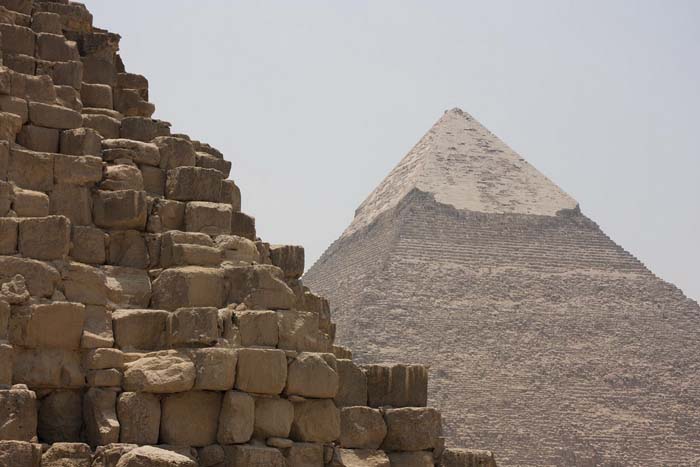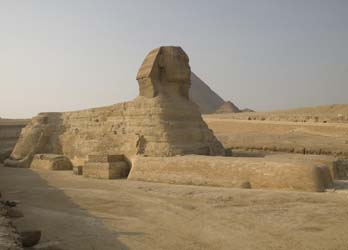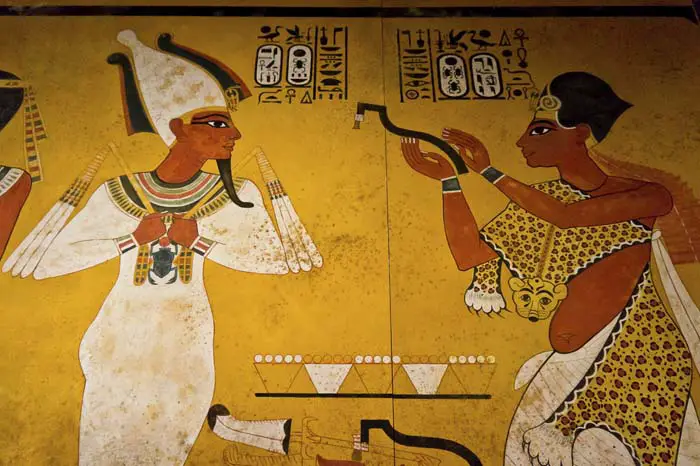Ancient Egyptian Pyramids - For Kids
Most of the Egyptian pyramids were constructed as burial monuments for the Egyptian pharaohs. They were built of enormous stones in varying sizes; inside they contained corridors and chambers that housed many of the items the Egyptians thought the pharaohs would need in the afterlife. Due to the dryness of the desert where they were built, the contents were not subject to decay, mildew, or decomposition.
Size and Construction of the Pyramids
The pyramids were generally very large square structures made of limestone and all of them face due North. The Great Pyramid of Giza was the tallest structure in the world for almost 4,000 years and contains approximately 6 million tons of stone.
The Great Pyramid at Giza is one of the Seven Wonders of the World.

© Mariusz Kluzniak - The Great Pyramid at Giza
The great stones were held together by a mortar that, although the composition is known, modern science is unable to replicate. It is very fine and sturdy. Although the pyramids could be constructed using modern technology, modern science cannot duplicate the pyramids by using technology that was available at the time they were built.
Earlier pyramids have stair-stepped sides but those constructed later have smooth, flat sides. The Great Pyramid at Giza had polished sides made of highly-reflective Tura limestone. When sunlight reflected off it, the Giza pyramid looked like a great shining light. The Great Pyramid at Giza is the only one to have eight sides; all the rest of the pyramids have four sides.

© Héctor de Pereda - Pyramid Blocks
The Great Sphinx of Egypt 'protects' the Egyptian pyramids. With the body of a lion and the head of a man, this structure was intended to keep the burial tombs safe from the effects of angry gods and thieving humans. The pyramid tombs were placed to the left of the Nile River because that was considered to be the land of the dead.

© Norman Walsh - The Great Sphinx guards the Pyramids
Purpose of the Pyramids
The pyramids were intended to provide a safe burial place for the pharaoh to pass on to the afterlife. Many had burial rooms for both the pharaoh and his wife. Except for one, all of the pharaohs were men. The pyramids also contained gold and silver artifacts as well as food and drink for the pharaoh to use in his journey to the afterlife.

© Shelby Root - Egyptian Tomb
The Egyptians were a multi-theistic society. That is, they worshiped many gods and believed that the pharaohs were their direct link to the gods. The pharaohs transitioned to gods after they died, thus the attention to the Pharaoh's needs in the afterlife.
Paintings and inscriptions that decorate the interior of the pyramids provide us with information about the lives of the Egyptians. Many of these paintings depict the daily lives of the pharaohs and from them we can learn much about the pharaohs. For example, King Tutankhamen is usually depicted in a seated position. This corroborates findings from his sarcophagus that indicate that King Tut had a club foot, which would have prohibited him from standing for extended periods of time.

© Jean-Paul Remy - Paintings from the Tomb of Tutankhamun
Curses and physical traps were place on and in the pyramids in order to protect them and deter thieves and robbers from looting the tomb. However, most of the pyramids have had their treasures looted and are in a considerably worse condition than they were at the time of their construction.
